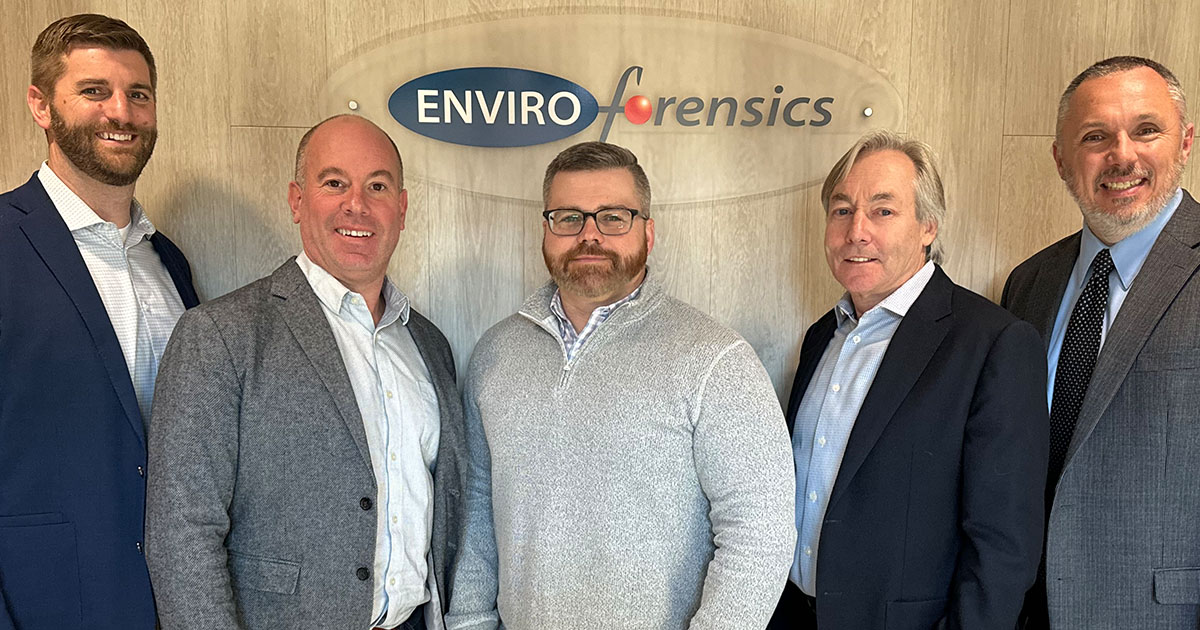Written By Keith Gaskill, L.P.G., EnviroForensics, in collaboration with Stephen R. Henshaw, P.G., President & CEO, EnviroForensics.
As seen in the March 2012 issue of Cleaner & Launderer.
Environmental impact due to historical drycleaning practices is not a rarity. In fact, it’s common to find drycleaning solvents in the soil, groundwater and vapor under and around current and former drycleaning facilities. A big part of our job is to figure out the means to best remediate the environmental impact.
The purpose of remediation is to abate the environmental impact, clean up the contamination and protect human health and the environment. But just how much are we affecting our overall environment by cleaning your site? Does removing 50 tons of impacted soil from under a drycleaning facility clean a site? Where does that soil go? Does the installation of a mechanical remediation system such as Soil Vapor Extraction (SVE) not have its own environmental impacts? The systems run on electricity and electricity must be produced, many times by the combustion of coal or hydrocarbons which creates greenhouse gas emissions and sulfur and other non-friendly emissions. Even the protective Tyvek suits, Latex gloves and disposable sampling equipment creates waste which is landfilled. On one hand we are cleaning up a problem and on the other we are creating a problem.
Does the positive outcome at your site negatively affect someone else? The answer is difficult to quantify. The recent “Green Movement” has forced us as environmental consultants to more carefully consider that answer.
Make no mistake, the world is going green. The green ideology is here to stay. How then, have the remediation scientists who have recognized the shift in thinking changed their remediation methods? There are many ways. Remediation scientists are generally very cognizant of the environment and typically keep up with current environmental issues closely. The following are means by which remediation scientists and engineers are more “environmentally” cleaning the environment.
Landfill Technology
Advancements in landfill design and construction has allowed increased confidence that if impacted soil is placed in a landfill, that it will not re-enter the environment through leaching to groundwater or vapor release. When landfills have reached capacity, the land is safe enough to use for parks or golf courses. Additionally, landfill gasses can be collected and utilized to power onsite energy needs. Of course, as a society we still need to work on reducing the emissions generated by the garbage trucks.
Bioremediation
The groundwater in most locations has naturally occurring microbes that, under the right conditions, break down drycleaning solvents to non-hazardous materials. This process occurs slowly under natural, steady state conditions, but can be sped up or enhanced. Enhanced Reductive Dechlorination (ERD) is a widely used and accepted remediation technology that involved the addition of materials that create chemical conditions that enhance and speed up the breakdown of the solvents. Some of the materials that we have used to enhance the breakdown of solvents in groundwater include corn syrup, dairy cheese whey, food grade soy based vegetable oil, molasses, among other glucose based material. These materials are naturally occurring renewable resources and require a relatively small amount of industrial energy consumption to produce. The consumption of these materials also supports the agricultural industry.
Phytoremediation
Plants, such as Osier (willow), Poplar tress, Pine trees, switch grass and even mushrooms have been planted in areas where shallow soil and groundwater impacts are present. These species of plants collect the impact through their roots and respirate them. This type of remediation can only be used in certain settings, but has been proven effective.
Combustible Vapor Energy Recycling
Although this type of remedation technology may not apply directly to the drycleaning industry (chlorinated solvents are non-combustible), it is a good example of sustainable energy use. During the remediation of petroleum fuel spills, the vapors are collected and sent to an internal combustion engine similar to that in an automobile. These combustible petroleum vapors are used to power the engine that in turn, requires more vapors be collected to sustain the combustion process. This type of closed system is self sustaining and requires much less outside energy than typical systems.
Onsite Solar and Wind Power Supply
Solar panels and wind turbines have been purchased or rented to supply portions of remediation systems with renewable and sustainable power. Solar panels can be placed at each remedial wellhead or on the roof of a site building. Wind turbines are more effective in rural settings, but have been proven effective sources of energy in powering remediation systems. These types of energy sources are effective for any type of mechanical system that may need power for months to years thereby cutting energy costs and reducing the overall environmental impact.



